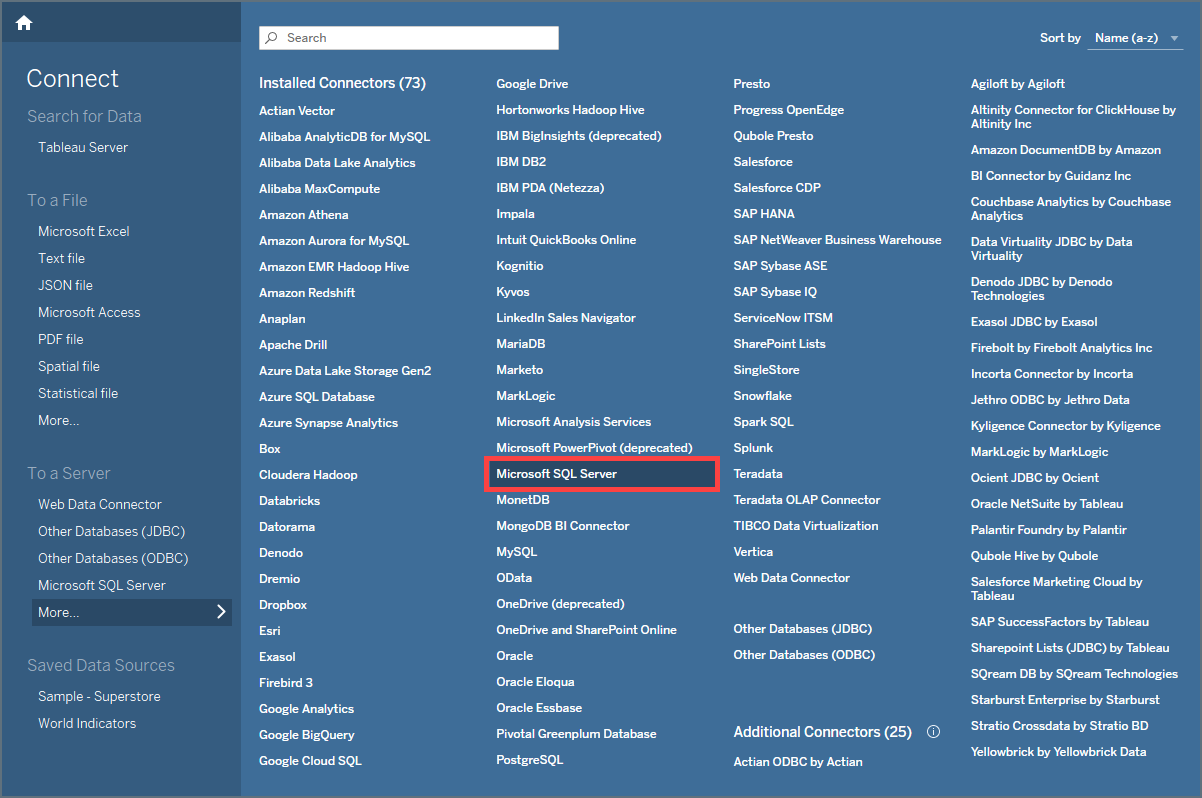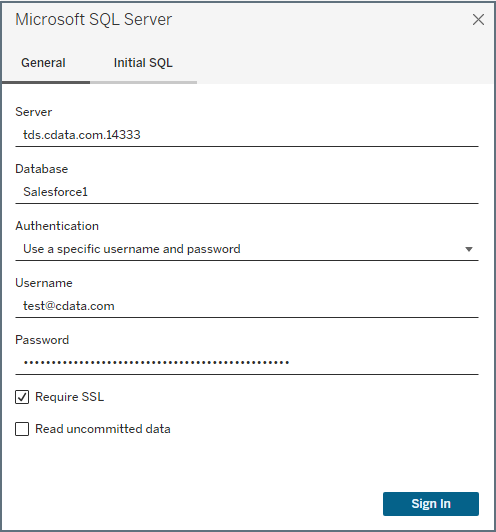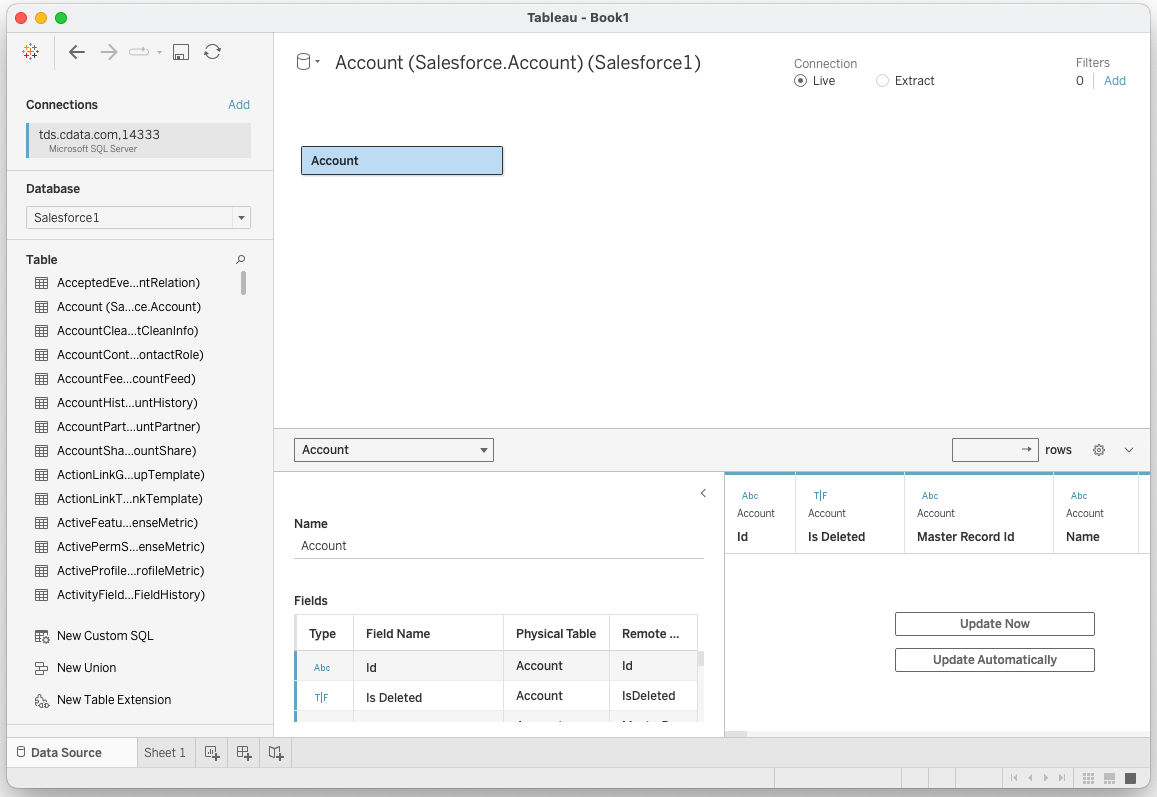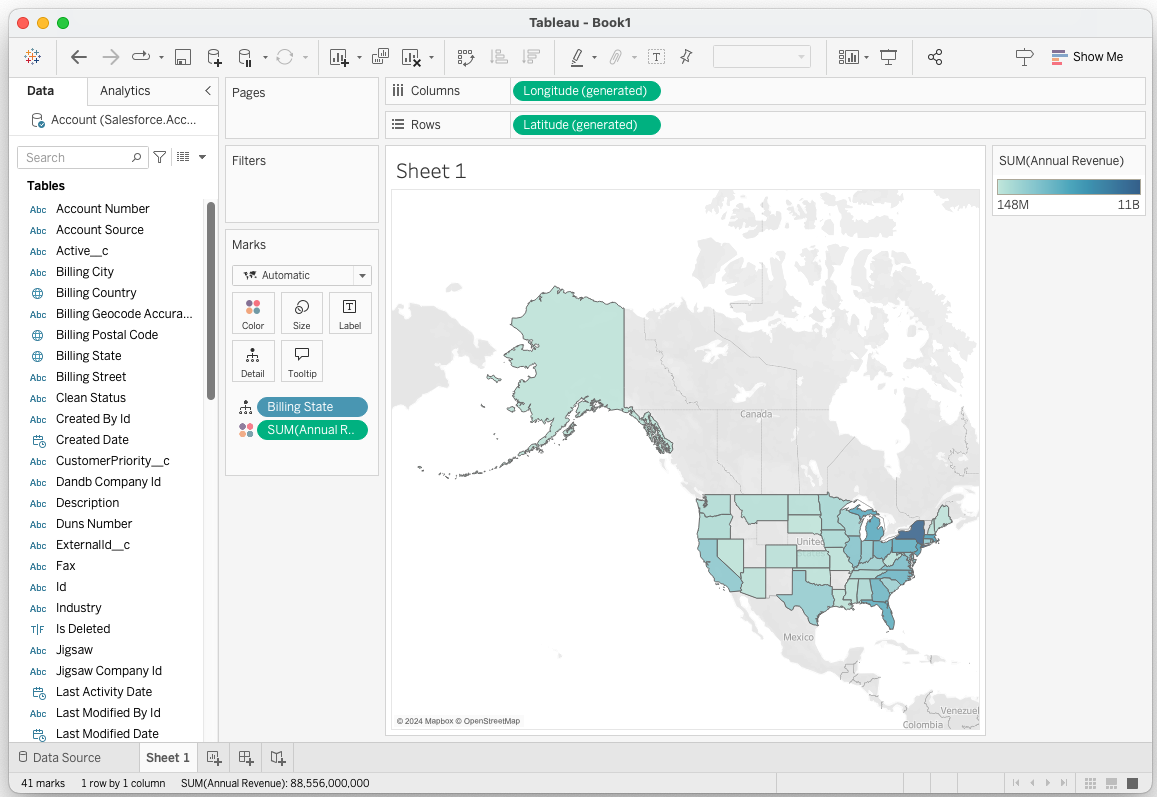Discover how a bimodal integration strategy can address the major data management challenges facing your organization today.
Get the Report →Build ADP Visualizations in Tableau Desktop
Use CData Connect Cloud to connect to live ADP data and build visualizations in Tableau.
Tableau is a visual analytics platform transforming the way businesses use data to solve problems. When paired with CData Connect Cloud, you get instant, cloud-to-cloud access to ADP data for visualizations, dashboards, and more. This article shows how to connect to ADP and build visualizations from ADP data in Tableau.
CData Connect Cloud provides a pure SQL Server, cloud-to-cloud interface for ADP, allowing you to easily build visualizations from live ADP data in Tableau without installing connectors. As you build visualizations, Tableau generates SQL queries to gather data. Using optimized data processing out of the box, CData Connect Cloud pushes all supported SQL operations (filters, JOINs, etc) directly to ADP, leveraging server-side processing to quickly return ADP data.
Configure ADP Connectivity for Tableau
Connectivity to ADP from Tableau is made possible through CData Connect Cloud. To work with ADP data from Tableau, we start by creating and configuring a ADP connection.
- Log into Connect Cloud, click Connections and click Add Connection
![Adding a Connection]()
- Select "ADP" from the Add Connection panel
![Selecting a data source]()
-
Enter the necessary authentication properties to connect to ADP.
Connect to ADP by specifying the following properties:
- SSLClientCert: Set this to the certificate provided during registration.
- SSLClientCertPassword: Set this to the password of the certificate.
- UseUAT: The connector makes requests to the production environment by default. If using a developer account, set UseUAT = true.
- RowScanDepth: The maximum number of rows to scan for the custom fields columns available in the table. The default value will be set to 100. Setting a high value may decrease performance.
The connector uses OAuth to authenticate with ADP. OAuth requires the authenticating user to interact with ADP using the browser. For more information, refer to the OAuth section in the Help documentation.
![Configuring a connection (Salesforce is shown)]()
- Click Create & Test
- Navigate to the Permissions tab in the Add ADP Connection page and update the User-based permissions.
![Updating permissions]()
Add a Personal Access Token
If you are connecting from a service, application, platform, or framework that does not support OAuth authentication, you can create a Personal Access Token (PAT) to use for authentication. Best practices would dictate that you create a separate PAT for each service, to maintain granularity of access.
- Click on your username at the top right of the Connect Cloud app and click User Profile.
- On the User Profile page, scroll down to the Personal Access Tokens section and click Create PAT.
- Give your PAT a name and click Create.
![Creating a new PAT]()
- The personal access token is only visible at creation, so be sure to copy it and store it securely for future use.
With the connection configured, you are ready to connect to ADP data from Tableau.
Visualize Live ADP Data in Tableau
To establish a connection from Tableau Desktop to the CData Connect Cloud Virtual SQL Server API, follow these steps.
- In Tableau Desktop, open a new book. Under To a Server, select More, then Microsoft SQL Server.
![Selecting Microsoft SQL Server as the connection type.]()
- Enter your credentials:
- Server: enter the Virtual SQL Server endpoint and port separated by a comma: tds.cdata.com,14333
- Database: enter the Connection Name of the CData Connect Cloud data source you want to connect to (for example, ADP1).
- Authentication: select Use a specific username and password.
- Username: enter your CData Connect Cloud username. This is displayed in the top-right corner of the CData Connect Cloud interface. For example, [email protected].
- Password: enter the PAT you previously generated.
- Require SSL: leave this selected.
![Configuring the connection to the Virtual SQL Server API.]()
- Click Sign In.
- Select the Database (Connect Cloud connection) you wish to work with and opt for a Live or Extract Connection type.
- Select the table(s) you wish to visualize. If you select multiple tables, define the relationship between the tables using the appropriate columns.
![Selecting tables to visualize (Salesforce is shown)]()
- Select the fields to visualize.
![Visualizing live data (Salesforce is shown).]()
Real-Time Access to ADP Data from Data Applications
At this point, you have a direct, cloud-to-cloud connection to live ADP data from your Tableau workbook. You can create new visualizations, build dashboards, and more. For more information on gaining live access to data from more than 100 SaaS, Big Data, and NoSQL sources from applications like Tableau, refer to our Connect Cloud page.














